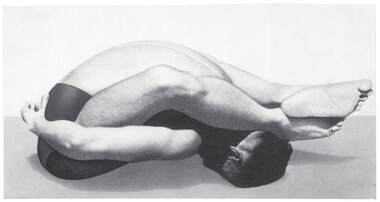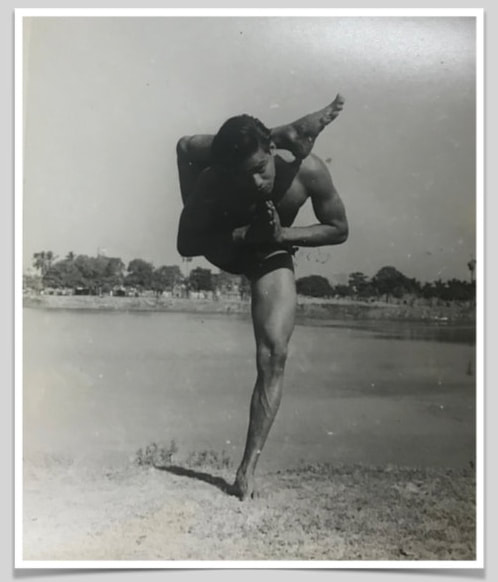|
This blog is in celebration of 100 years of Ghosh's College in Kolkata: 1923-2023! Spread the word: #100years #ghoshyoga  Nowadays, asana is often thought of in sequences. We practice set sequences like Bikram Yoga or the Ashtanga series. Many teacher trainings have a strong emphasis on "sequencing" and how to structure a class. This has become an essential part of learning how to teach a group class. However in India, asana practice was and still is very individual. There are groups of postures, but only an accomplished teacher can select the right method of practice for each practitioner. Everyone is different so each person is assigned their own practice. There are certainly some yoga studios in India now that will teach sequences of asanas in group classes, but elsewhere it is still very much tailored to individual practice. Let's look at some examples of how an asana practice was structured prior to the 1970s. Buddha Bose & Dr Gouri Shankar Mukerji In 1939, Buddha Bose writes about a large number of asanas. He classified them under six headings: Padmasana, Sitting postures, Reclining attitudes, Standing positions, Kurmasana or tortoise poses, and Mudras. These were organizational groups, not in an order for practice. We know this because he explains: “I have also arranged the exercises in each series so that the easiest comes first and the most difficult last. The students should start by practicing a few exercises in each group (except those in the Kurmasana series) and then gradually work up to the more difficult ones.....No one, however skilled, should perform all of the asanas every day. It is better gradually to increase the duration of practice of each exercise than to strive to practice a large number of them for a brief period.” Similarly, Dr Gouri Shankar Mukerji writes that: “It is not recommended to perform more than five exercises in succession, in order to avoid fatigue. It is better to perform a few exercises, but in complete tranquility, than to execute ‘one’s program’ at all costs under time pressure....It is also not necessary to master all 88 exercises, but one should preferably choose those that are appealing, and that one thinks one can personally perform or learn.” Self Realization Magazine A third example can be found in the Self Realization Magazine. The magazine groups the postures into three groups: sitting, lying down and standing. This is similar to Bose's approach. Then the magazine states: "A word of caution is in order here, however. Do not attempt all the postures listed in this article at one time! The list is only intended as a sensible guide from the simple to the most difficult asanas in each of the three categories. Practice only a few at any one time, and continue practicing those few until you perfect them before you attempt another group." Takeaways There are a few common themes we can highlight through these passages. First, is that these are lists or groupings of possible postures for practice. However, the instructions repeatedly say that not all of the postures should be done during the same practice. And furthermore, not all postures are necessary for everyone to practice. Sources: 84 Yoga Asanas by Buddha Bose 84 Yoga Asanas by Gouri Shankar Mukerji Self Realization Magazine
0 Comments
Leave a Reply. |
AUTHORSScott & Ida are Yoga Acharyas (Masters of Yoga). They are scholars as well as practitioners of yogic postures, breath control and meditation. They are the head teachers of Ghosh Yoga.
POPULAR- The 113 Postures of Ghosh Yoga
- Make the Hamstrings Strong, Not Long - Understanding Chair Posture - Lock the Knee History - It Doesn't Matter If Your Head Is On Your Knee - Bow Pose (Dhanurasana) - 5 Reasons To Backbend - Origins of Standing Bow - The Traditional Yoga In Bikram's Class - What About the Women?! - Through Bishnu's Eyes - Why Teaching Is Not a Personal Practice Categories
All
Archives
May 2024
|







 RSS Feed
RSS Feed